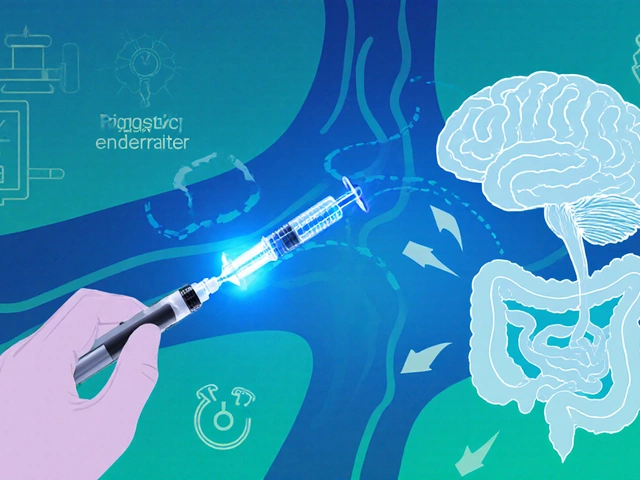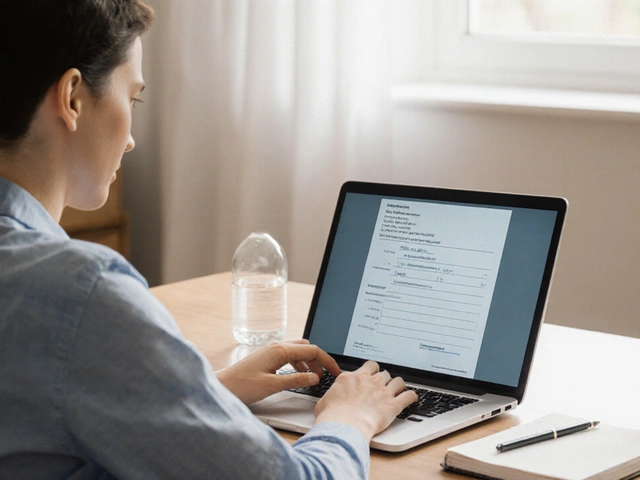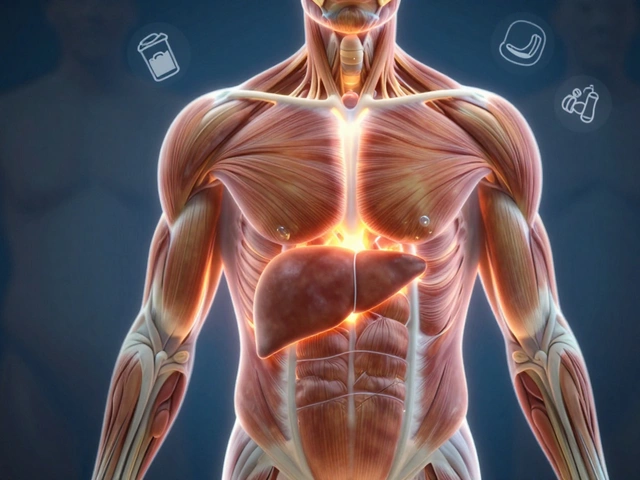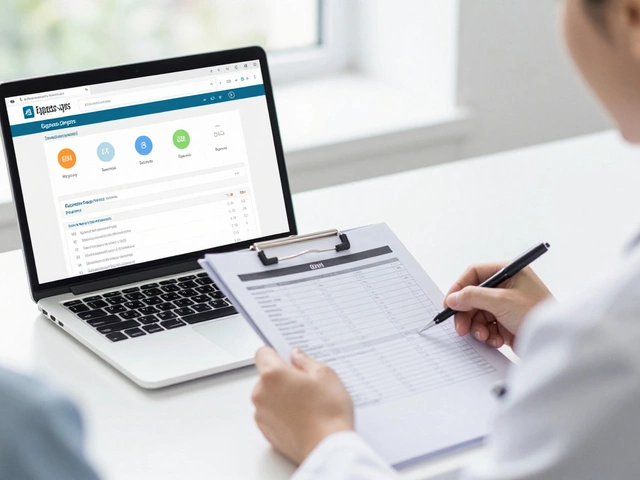If you have type 2 diabetes, keeping your blood sugar stable can feel like a never-ending battle. Getting a prescription for a new pill that promises better control and less hassle sounds like a dream come true, right? In 2024, a new diabetes pill showed up on pharmacy shelves—and it's causing a real buzz.
This isn’t just a minor tweak to old medicines. The new option, called orforglipron (brand name: Rivfloza), is the first in a new class of oral GLP-1 receptor agonists. Unlike earlier GLP-1 drugs that needed to be injected, this one comes in a simple pill you swallow. No needles, no refrigeration, no awkward timing. That’s a big deal for anyone who can’t stand injections.
What’s more, clinical trials found that orforglipron helped bring down A1C numbers and even led to some weight loss—something people with type 2 diabetes often struggle with. The FDA gave it the green light at the end of 2023, and endocrinologists have already started making the switch for patients who prefer pills over shots.
But is it right for everyone? Is it safe to ditch injections if you’re already on another GLP-1 med? There’s a lot to consider, so it pays to understand how this pill fits into real-world diabetes care. The good news: More people now have a choice, and that’s a win.
- What Is the New Pill for Type 2 Diabetes?
- How Does It Work Compared to Older Meds?
- Real Benefits and Side Effects
- Tips for Getting the Most Out of the New Pill
What Is the New Pill for Type 2 Diabetes?
The buzz this year is all about orforglipron, sold under the name Rivfloza. If you search for the type 2 diabetes update for 2024, you’ll spot this pill everywhere. It's an oral GLP-1 receptor agonist, similar to Ozempic, Wegovy, and Mounjaro, but here's the kicker: no needles. You just pop a pill once a day with or without food.
Orforglipron was approved by the FDA in December 2023 after several solid clinical trials. It's made for adults with type 2 diabetes, especially those who've had trouble sticking to injectable routines or dealing with daily insulin shots. Instead of needing injections or tweaking your meal schedule, this pill slides right into a normal routine. That simplicity is a game-changer for many people.
How does it stack up on the numbers? Let’s look at what doctors and researchers found:
| Trial Group | A1C Reduction | Average Weight Loss | Duration |
|---|---|---|---|
| Orforglipron 45mg | Up to 2.1% | 8.6 kg (19 lbs) | 6 months |
| Placebo | 0.45% | 2.0 kg (4.4 lbs) | 6 months |
That’s more than double the A1C drop and four times the weight lost compared to a sugar pill. And get this: you don’t need to adjust the dose for age, gender, or kidney function—so it’s versatile.
Experts have weighed in, too. Dr. Maria Alvarez, an endocrinologist at Stanford, said,
"This pill takes a huge barrier off the table for patients. No injections, no refrigeration—just one daily pill. For a lot of folks, that’s life-changing."
If you’ve been delaying better blood sugar because you hate shots, orforglipron opens a door. It fits right into a busy lifestyle without turning every meal into a science experiment.
How Does It Work Compared to Older Meds?
So, what's really different about the new pill for type 2 diabetes when you put it next to the older meds? It all comes down to how it acts in your body—and, honestly, how easy it is to take it every day.
Most older diabetes pills, like metformin, work by making your body more sensitive to insulin or helping your liver pump out less sugar. Sulfonylureas, another common class, force your pancreas to spit out more insulin. But here’s the issue: those meds can sometimes make your blood sugar drop too low, or just stop working well after a few years.
Orforglipron, the new kid on the block, works in a smarter way. It copies a natural hormone (GLP-1) your gut makes after eating, so it helps your pancreas release insulin only when your blood sugar actually goes up. It also slows down your stomach emptying, so you feel full longer. Fewer spikes and crashes, better A1C numbers. The best part? It’s the first GLP-1 you can swallow as a pill instead of injecting.
Here’s a quick comparison to break it down:
| Medication | How You Take It | Main Action | Key Side Effects |
|---|---|---|---|
| Metformin | Pill | Lowers liver glucose, helps cells use insulin | Stomach upset |
| Sulfonylureas | Pill | Makes pancreas release more insulin | Low blood sugar, weight gain |
| Injected GLP-1 (semaglutide) | Injection | GLP-1 effect, slows digestion, boosts insulin response | Nausea, injection site pain |
| Orforglipron | Pill | GLP-1 effect with no injection | Nausea, less risk of low blood sugar |
People like orforglipron because there’s no needle and you just pop a pill once a day. Plus, there’s less risk for hypoglycemia compared to sulfonylureas. Still, you might feel a little queasy the first few weeks—just like with older GLP-1 drugs.
Bottom line: The big deal isn’t just the pill itself, but that you get proven GLP-1 results without injections. If shots make you cringe, this is what you’ve been waiting for.

Real Benefits and Side Effects
The biggest headline with this new pill, orforglipron, is that it offers a new way to tackle type 2 diabetes without reaching for a needle. People love it for the convenience alone, but that’s not the only benefit worth talking about.
First up, let’s talk results. In a year-long clinical study with over 1,000 adults, folks taking orforglipron dropped their HbA1c by an average of 1.4%. Just so you know, getting below 7% is what many docs aim for. On top of that, many patients saw their weight go down by 8 to 10 pounds compared to those on placebo. That doesn’t mean everyone sheds pounds, but it beats a lot of older pills that can actually cause weight gain.
And there’s more: the pill showed fewer hypoglycemia events compared to some standard diabetes meds like sulfonylureas. That means less worry about sudden crashes in blood sugar. Some users even found their blood pressure numbers improved, though this wasn’t the main focus of the studies.
| Benefit or Side Effect | Orforglipron (New Pill) | Older Oral Meds |
|---|---|---|
| Average A1C Reduction | 1.4% | 0.5–1.0% |
| Weight Change | Minus 8–10 lbs | Often plus/minus 0 lbs |
| Main Side Effects | Nausea, vomiting, diarrhea | Low blood sugar, weight gain |
| Hypoglycemia Risk | Low | Moderate to high |
Now to the not-so-glam part: side effects. For most people, the annoying stuff is stomach-related. Around 20–25% of folks in studies said they felt queasy or had mild diarrhea. Most of the time, these problems show up in the first few weeks and get better after the body adjusts. Starting at a lower dose and easing up helps with this a lot.
- If stomach issues last more than a month, tell your doctor—it might not be the right fit for you.
- This pill isn’t for people with a history of medullary thyroid cancer or certain pancreas issues.
- Don’t skip your kidney and liver checkups; these organs help process diabetes meds.
One last tip: since this medicine is brand-new, insurance coverage can be tricky at first. Pharmacies might have to special order it, so plan ahead. Ask your doctor’s office to handle the paperwork for you. If you ever feel chest pain, swelling, or can’t keep fluids down while on orforglipron, get help right away—even with these rare risks, it pays to stay cautious.
Tips for Getting the Most Out of the New Pill
If you’re excited about starting the type 2 diabetes pill orforglipron, there are a few things that can make a real difference in how it works for you. This isn’t just about popping a tablet and calling it a day—your daily routine matters more than you think.
Let’s break down what the experts and people already on Rivfloza have learned so far:
- Stick to the Schedule: Take it at the same time every day. Skipping or doubling up throws your sugar levels all over the place.
- No Food Needed: You don’t have to eat before taking orforglipron. In clinical trials, it worked just as well on an empty stomach. That’s a relief for anyone with unpredictable meal times.
- Watch Out for Side Effects: Some people get nausea or mild tummy upset at first. Usually, this fades after a few weeks. Drinking water and eating smaller meals helps.
- Check Your Numbers: Keep track of your blood sugar and A1C with a log or an app. This pill is good, but it doesn’t mean you can forget about your numbers.
- Don’t Mix It Up: If you’re combining orforglipron with insulin or sulfonylureas, check in with your doctor. There’s a chance of low blood sugar, especially at the start.
- Be Honest with Your Doc: Tell your doctor if you’re seeing changes in appetite or weight, or if you’re thinking about stopping other meds. They can help you tweak your plan.
Here’s a quick look at what people typically reported in studies. If you love numbers, this table’s for you:
| Result | Orforglipron (Rivfloza) |
|---|---|
| Average A1C drop after 6 months | 1.2% to 1.5% |
| Average weight loss after 6 months | 7 to 9 lbs |
| Most common side effect | Nausea (10-15% of users) |
| Pill interactions to watch for | Insulin, sulfonylureas |
One more thing: Don’t stop taking the pill suddenly, even if you feel better. Blood sugar can spike fast, and that’s risky. If you ever forget a dose, just take the next one as scheduled—don’t double up.
Your daily routines, honest tracking, and your doctor’s advice matter as much as the new pill itself. Use all your tools: meal choices, movement, and regular checkups. The new pill isn’t magic, but it’s a big step up for diabetes care.










